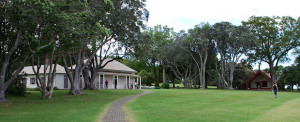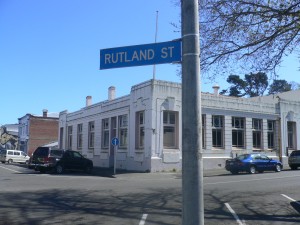The Treaty Signed
The Treaty of Waitangi was signed on 6 February 1840, between the British Crown and Māori. About forty chiefs signed at Waitangi. Copies of the Treaty document were thereafter taken around New Zealand for further Maori signatures.

About 500 Māori eventually signed various copies at various times. However, significant chiefs and groups of Maori chose not to sign, especially Te Whero Whero of Waikato, who would later become the first Māori King in 1858.
For Māori, the Treaty of Waitangi incorporated a number of undertakings that were not fulfilled by the Crown. For example, Maori people were not included when an early Executive Council to govern New Zealand was established by Governor Hobson. Māori perceived a gradual but definite imposition of British law and institutions at the expense of traditional Māori lore and sanctions.
‘Amalgamating Maori’
An overall policy of ‘amalgamating’ Māori into new settler institutions pervaded all dealings between Crown and Māori. As Dr Hazel Riseborough has pointed out, New Zealand was now no longer to be a place belonging to Māori, with space reserved for Pākehā. Instead, New Zealand was to be a place for Pākehā, and room now had to be found for Māori. This was contrary to what Māori had thought the Treaty was all about; and they said so.
Plus, around Waitangi and Kororareka, Ngā Puhi experienced economic losses following the Crown’s assuming of responsibility for collecting shipping dues and taxes. Ngā Puhi also felt slighted by the Crown’s decision to move the capital of New Zealand from Kororareka to Auckland.
For these and other reasons, Hone Heke began to agitate around Kororareka in the early 1840s. He instigated the felling of the Maiki Hill flagpole, and the British flag, four times. The fourth felling was followed by an attack on Kororareka itself. The town was destroyed and a number of settlers were killed, thus starting the northern war.
‘Broken Treaty Promises’
The Treaty of Waitangi, and its believed promises, were much cited by Māori, as the wars progressed. Many Māori believed that the Crown and settlers were acting in a manner contrary to the Treaty’s undertakings in pursuing war against them. For its part, the Crown believed Māori to have been in rebellion, against the Crown’s sole authority to govern, an authority conferred upon it (it argued) by the Treaty of Waitangi.
If you would like to read Danny’s essay on Hone Heke, as published in the Mana Magazine, No 51, 2003, pp. 83-86, click here # Essay on Hone Heke.
Further reading – Peter Adams, Fatal Necessity: British Intervention in New Zealand 1830-1847, Auckland, 1977; Patricia Burns, Fatal Success: A History of the New Zealand Company, Wellington, 1989; Claudia Orange, The Treaty of Waitangi, Auckland, 1987; Alan Ward, A Show of Justice. Racial ‘Amalgamation’ in Nineteenth Century New Zealand, Auckland, 1973.


